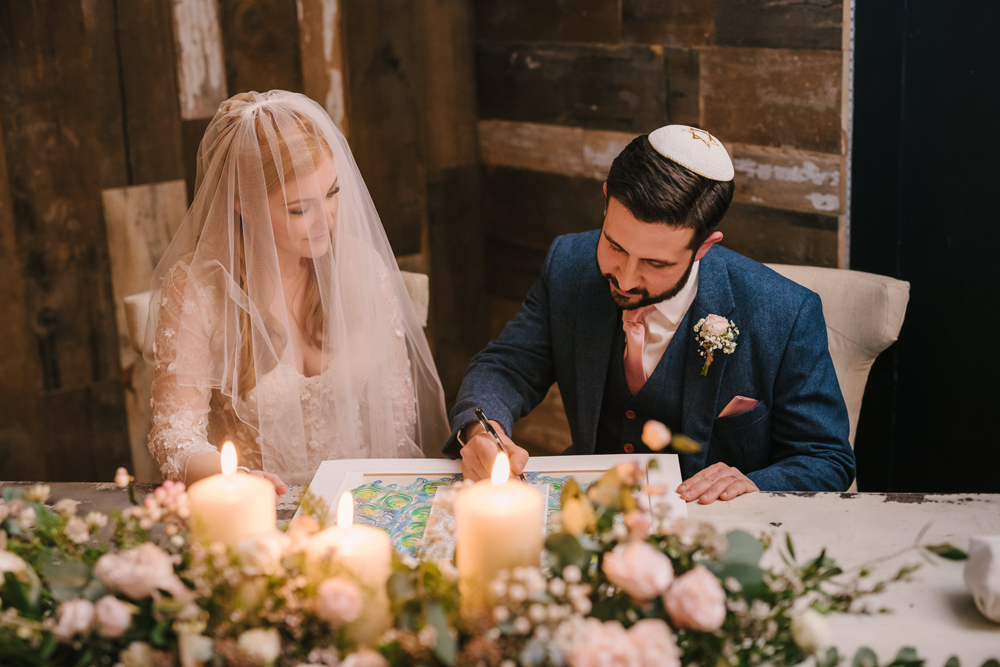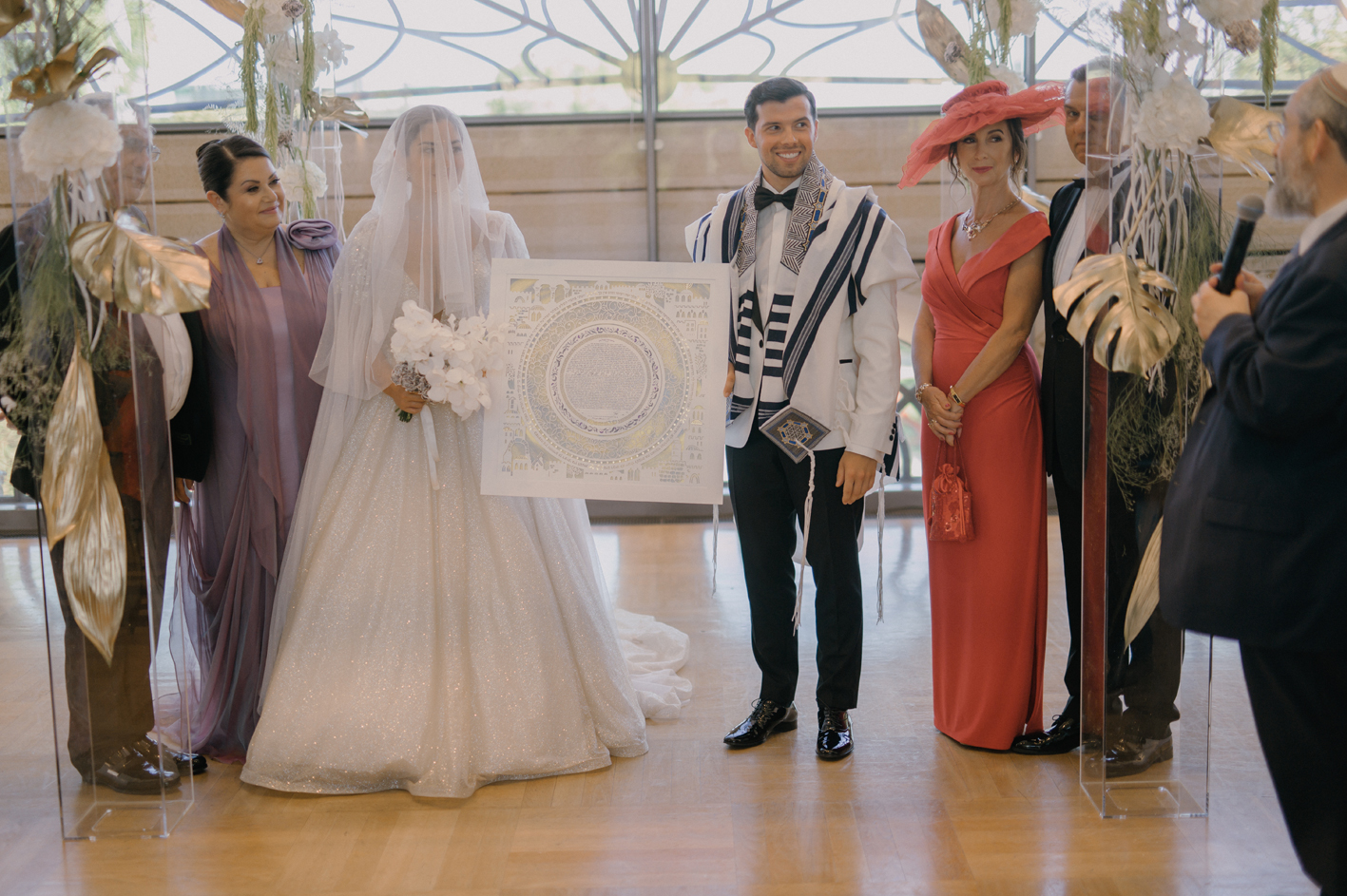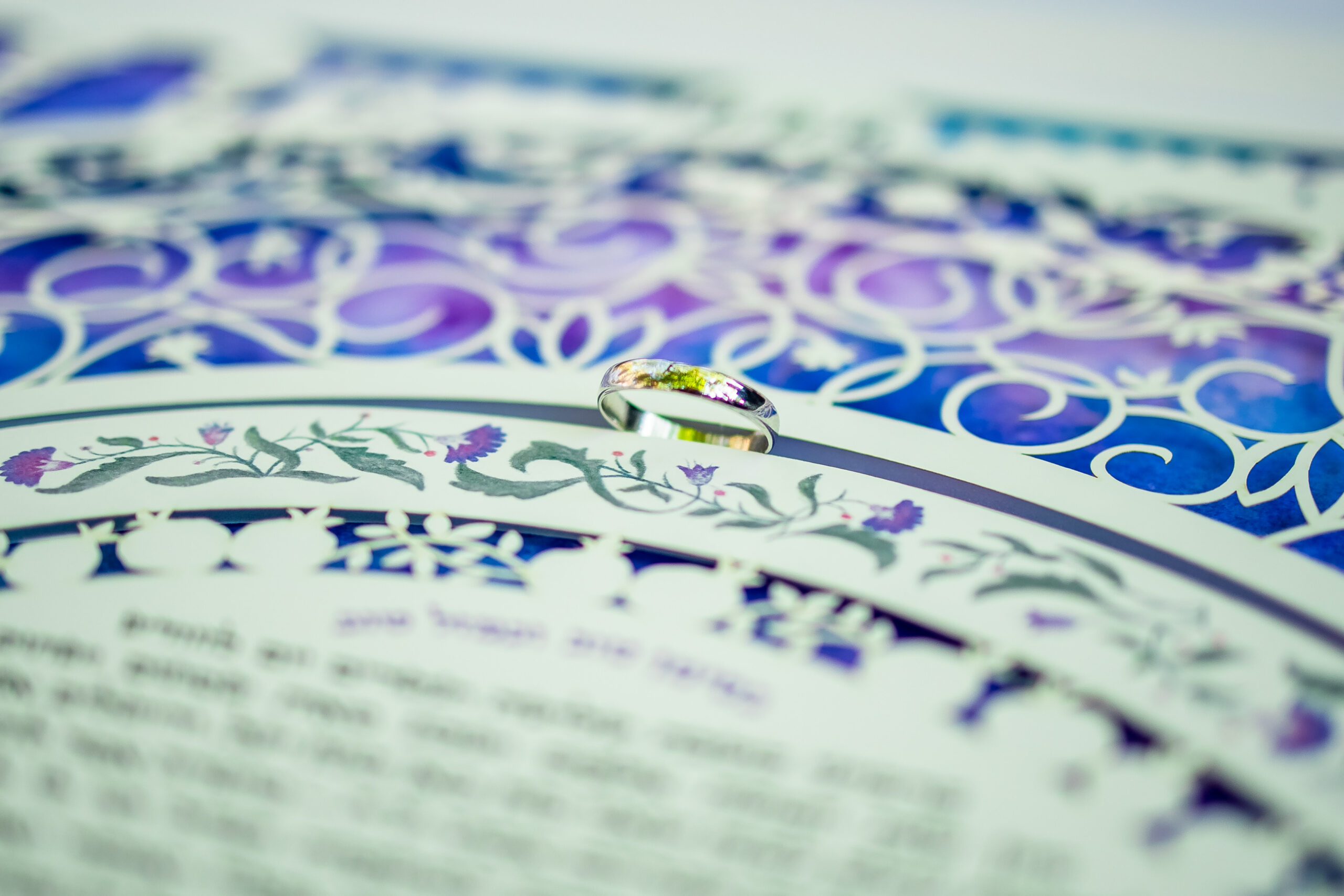
Exploring the significant role of Ketubah, a Jewish marriage contract, in interfaith marriages, this blog post outlines its importance, relevance, and the beneficial impact it can have on such unions. It delves into the history, meaning, and modern interpretations of Ketubah, while offering insights on how it can contribute to interfaith marriages in fostering mutual respect, understanding, and commitment.
Understanding the Ketubah: What’s in a Contract?
The Ketubah, a traditional Jewish marriage contract, holds significant importance in Jewish weddings. It is a legal document that outlines the rights and responsibilities of both partners within the marriage. The Ketubah is not just a mere piece of paper; it serves as a tangible symbol of the union and commitment between the couple. This contract includes various clauses regarding financial provisions, inheritance rights, and conjugal obligations. It also specifies the bride’s dowry and provides protection for the wife in case of divorce or the husband’s death. The Ketubah is signed by both partners, as well as two male witnesses, to validate its authenticity and enforceability.
Unlike a typical legal contract, the Ketubah is not solely focused on protecting the interests of one party. Instead, it emphasizes the importance of mutual respect, love, and support within the marriage. The language used in the Ketubah reflects the significance of these values, highlighting the couple’s commitment to building a life together. It serves as a reminder of the promises made and the obligations undertaken by both partners.
The Ketubah also establishes the financial obligations of the husband towards his wife. It states the amount of money or assets that the husband must provide to the wife, offering her financial security throughout the marriage. This provision ensures that the wife is not left vulnerable or dependent on others for her basic needs. It also recognizes the valuable contributions made by the wife to the household and acknowledges her worth within the marriage.
In interfaith marriages, the Ketubah can take on a unique significance. It becomes a bridge between different cultures and religions, symbolizing the couple’s commitment to honor and respect each other’s traditions. By incorporating elements from both faiths into the Ketubah, interfaith couples can create a document that reflects their shared values and aspirations. This can foster a sense of unity and inclusivity within the marriage, acknowledging and celebrating the diversity that each partner brings.

A Ketubah with intricate designs
The Historical Significance of the Ketubah
The Ketubah has a rich historical significance that dates back thousands of years. It originated in ancient Jewish culture as a means to protect the rights of women within marriages. In a time when women had limited legal rights and autonomy, the Ketubah provided them with a level of financial security and protection. It ensured that in the event of divorce or the husband’s death, the wife would be entitled to certain financial provisions and support.
The roots of the Ketubah can be traced back to the Babylonian period, where it was initially introduced as a legal document. Over time, it evolved to include not only financial provisions but also moral and ethical obligations between the couple. The Ketubah served as a reminder of the couple’s commitment to each other and their shared responsibilities within the marriage.
Throughout history, the Ketubah has adapted to reflect the changing social and cultural norms of Jewish communities. Different regions and time periods have seen variations in the language, content, and design of the Ketubah. However, the underlying purpose has remained consistent – to establish a legal and moral framework for the marriage, ensuring the rights and obligations of both partners.
The historical significance of the Ketubah extends beyond its legal aspects. It also symbolizes the importance of family and community within Jewish culture. The Ketubah is often signed and witnessed by close family members and friends, emphasizing their support and involvement in the couple’s union. It is a reminder that marriage is not just a union between two individuals but a joining of families and communities.
How does the Ketubah Impact an Interfaith Marriage?
In an interfaith marriage, where two individuals from different religious backgrounds come together, the Ketubah can play a significant role in fostering understanding, respect, and compromise. The Ketubah serves as a bridge between the religious traditions of both partners, acknowledging and honoring their individual beliefs and values.
One way the Ketubah impacts an interfaith marriage is by providing an opportunity for open and honest discussions about religious differences. The process of creating a Ketubah requires couples to engage in conversations about their respective faiths and how they can incorporate their beliefs into the document. This dialogue helps to establish a foundation of mutual respect and understanding, allowing the couple to navigate potential challenges that may arise due to their different religious backgrounds.
The Ketubah also acts as a visual representation of the couple’s commitment to each other and their shared goals. It allows them to express their love and devotion in a way that is meaningful to both partners, regardless of their religious affiliations. By including elements from each partner’s faith in the Ketubah, the document becomes a symbol of unity and inclusivity, showcasing the couple’s ability to embrace and celebrate their diverse backgrounds.
Furthermore, the Ketubah can serve as a source of comfort and reassurance for interfaith couples. In a society that often places emphasis on conformity and uniformity, the Ketubah validates the unique nature of their relationship and affirms their choice to unite despite their religious differences. It provides a sense of stability and security, assuring the couple that their commitment to each other is valued and respected within their respective religious communities.

Interfaith couple reading their Ketubah
Modern Interpretations of the Ketubah: Are They Still Relevant?
In today’s diverse and evolving society, the traditional Ketubah has undergone modern interpretations to reflect the changing dynamics of relationships and marriages. Some may question the relevance of these contemporary interpretations, wondering if they dilute the significance of the Ketubah. However, these modern adaptations actually serve to make the Ketubah more inclusive and adaptable to the needs of interfaith couples.
One significant modern interpretation is the inclusion of gender-neutral language in the Ketubah. Traditional Ketubahs often used language that assumed a heterosexual union, but modern versions acknowledge and validate the various forms of love and commitment found in today’s society. This inclusive language ensures that all couples, regardless of their sexual orientation, can feel represented and valued within the context of the Ketubah.
Another modern interpretation is the incorporation of personalized vows and promises into the Ketubah. While the traditional Ketubah primarily focused on legal and financial aspects, modern versions allow couples to express their unique aspirations, values, and intentions for their marriage. This personalized touch adds depth and meaning to the document, making it a true reflection of the couple’s journey together.
Moreover, modern interpretations of the Ketubah often emphasize the importance of equality and partnership within a marriage. These versions focus on shared decision-making, mutual respect, and support between the partners. By highlighting the equal roles and responsibilities of both individuals, these modern Ketubahs promote a sense of balance and fairness in the relationship.
Interfaith Couples and Their Personal Experiences with the Ketubah
Interfaith couples have unique and personal experiences when it comes to incorporating the Ketubah into their marriage ceremonies. These experiences can shed light on the significance and impact of the Ketubah in interfaith unions.
- 1. Embracing Both Traditions:
For interfaith couples, the Ketubah becomes a symbol of their shared values and commitment to honoring both of their religious or cultural backgrounds. It allows them to intertwine their traditions and create a meaningful ceremony that reflects their diverse identities. By including elements from both faiths or cultures in the Ketubah text or design, interfaith couples celebrate their journey of love and acceptance. - 2. Bridging the Gap:
The Ketubah also serves as a bridge between different religious or cultural practices within the marriage. It becomes a point of connection and understanding between the couple, their families, and their communities. By engaging in conversations about the Ketubah and its significance, interfaith couples can foster mutual respect and appreciation for each other’s beliefs and customs. - 3. A Commitment to Unity:
Many interfaith couples view the Ketubah as a way to solidify their commitment to each other while navigating the complexities of their diverse backgrounds. The Ketubah becomes a tangible reminder of their shared values, love, and dedication to building a harmonious and inclusive life together. It serves as a testament to their willingness to embrace and learn from each other’s traditions, fostering a sense of unity and growth within the marriage.

Interfaith couple sharing their Ketubah with family
“Is the Ketubah only for Jewish Marriages?”
The Ketubah is traditionally associated with Jewish marriages, but its significance and relevance extend beyond the boundaries of one particular religious or cultural tradition. While the Ketubah originated within Jewish customs, its principles of love, commitment, and mutual obligations can be embraced by couples of various faiths or even secular backgrounds.
Firstly, the Ketubah’s emphasis on love, respect, and responsibility resonates with the core values of many different belief systems. The document symbolizes the couple’s commitment to building a life together based on trust, support, and shared goals. Regardless of religious affiliation, couples can find value in expressing their dedication to a lasting and fulfilling partnership through the Ketubah.
Moreover, the Ketubah’s role in outlining financial responsibilities and provisions can be relevant to any couple, regardless of religious or cultural background. The document serves as a practical tool for establishing a framework of financial obligations and expectations, ensuring transparency and fairness within the relationship.
Furthermore, many couples choose to adapt the traditional Ketubah text to reflect their own personal beliefs and values. This customization allows for the inclusion of cultural or spiritual elements that are significant to the couple, making the Ketubah a truly personalized expression of their union.
The Ketubah: A Symbol of Love and Commitment?
The Ketubah serves as a powerful symbol of love and commitment in any marriage, transcending religious or cultural boundaries. This ancient document represents the couple’s dedication to each other, their shared values, and their mutual responsibilities. With its beautiful calligraphy and intricate design, the Ketubah becomes a cherished keepsake that reminds the couple of their commitment to one another every day.
The act of signing the Ketubah during the wedding ceremony holds great significance. It is a public declaration of the couple’s promises to love, support, and honor each other throughout their lives. This symbolic act not only solidifies their bond but also serves as a reminder of the vows they made on their special day.
Beyond its ceremonial role, the Ketubah has a practical function as well. It outlines the rights and responsibilities of each partner within the marriage, ensuring that both individuals are treated with fairness and respect. By detailing the financial provisions, the Ketubah promotes open communication and transparency, fostering a strong foundation for the couple’s shared future.
Moreover, the Ketubah is a testament to the couple’s commitment to their relationship. It is a tangible representation of their love and dedication, reminding them of the promises they made to each other. Displayed in their home, the Ketubah serves as a constant reminder of their shared journey and the importance of nurturing their bond.

Close-up shot of a Ketubah with phrases of love and commitment
In the end, the Ketubah, steeped in tradition and symbolism, can be a meaningful addition to interfaith marriages. It not only provides a tangible reminder of the vows and commitments made but also serves as a bridge between faiths, cultures, and individuals. By incorporating a Ketubah into interfaith marriages, couples can create their unique bond, enriching their relationship with values of respect, unity, and love.
https://noaattias.com/
Recent Comments